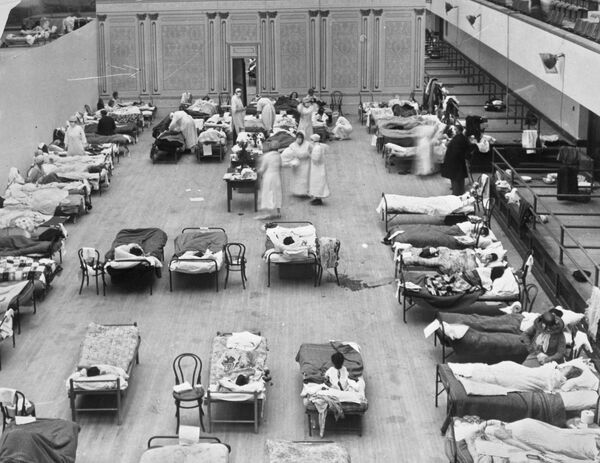Abnormal weather conditions may have had a vast impact on the already huge death toll during both World War I and the 1918 Spanish flu pandemic, new research published in GeoHealth suggests.
Having looked into an ice core extracted from the Swiss-Italian Alps, scientists managed to determine the climate patterns that allegedly dominated across Europe between 1914 and 1919, and came to believe that torrential rains and cold could well have pushed the number of deaths on the battlefield upwards.
"Atmospheric circulation changed and there was much more rain, much colder weather all over Europe for six years", climate scientist Alexander More from Harvard University shared, asserting that "in this particular case, it was a once in a 100-year anomaly".
The scientist assumed that it was not necessarily "the cause" of the pandemic that broke out in 1918, but certainly "a potentiator" and "an added exacerbating factor" to an explosive situation that had already spiraled out of control by then.
Traces of sea salt left in the ice core revealed extraordinary influxes of the Atlantic Ocean air and linked rainfall in the winters of at least 1915, 1916, and 1918, with the stints having been proved tragic as they also marked mortality peaks.
"We found the association between increased wetter and colder conditions and increased mortality to be especially strong from mid-1917 to mid-1918, spanning the period from the third battle of Ypres to the first wave of Spanish flu", says archaeologist Christopher Loveluck from the University of Nottingham in the UK.
The total death toll in World War I was approximately 10 million soldiers and commanders combined. Naturally, extreme weather conditions exacerbated woes such as severe frosts and trench foot. For instance, extremely wet weather led to quagmires right on the battlefield, which rendered it much harder to rescue wounded people, as well as soaring rates of pneumonia and other diseases.
The report suggests that the said climate anomaly could have played an overwhelming role not only in the way the war was waged at the time but also in preparing the ground for the H1N1 influenza strain to trigger a deadlier second wave of the Spanish flu, which picked up after the end of the war, however speculative the final research conclusions are.

More specifically, the research suggests that the streaks of bad weather were responsible for mallard ducks – a primary source of H1N1 – staying in western Europe, rather than migrating to Russia as usual, so that greater wet and dampness would have meant a faster spread of the virus as it mixed with bird droppings. The contagious flu killed a staggering 2.64 million people in Europe at the time.




